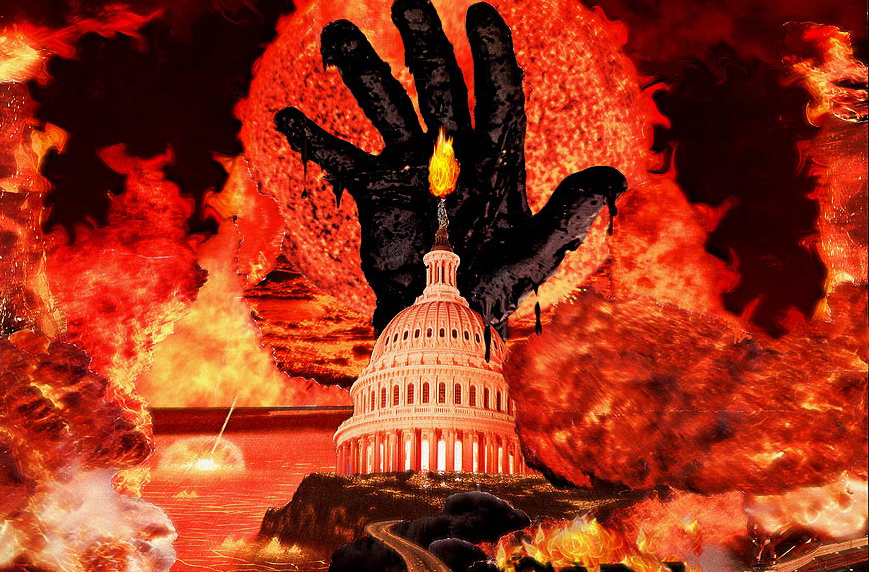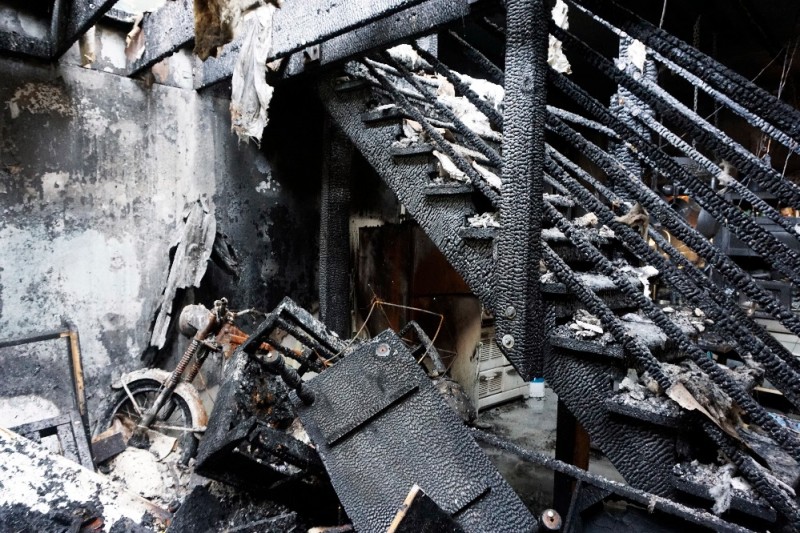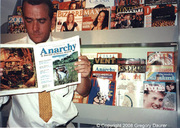Bob Black is author of many interventions, as well as a number of books, including The Abolition of Work and other Essays, Anarchy after Leftism, Beneath the Underground and Friendly Fire, along with the yet-to-be-published, Nightmares of Reason, and his latest work, Defacing the Currency: Selected Writings 1992 – 2012. He has contributed to many periodicals, including Anarchy: A Journal of Desire Armed.
Susannah Clemence. “Forty-odd years ago in a blacked-out West London bathroom, I was shown how to rinse a silkscreen. A bayonet-armed soldier charged above the slogan,
`DO NOT ADJUST YOUR MIND
THERE IS A FAULT IN REALITY’
I want to address the fault. To confront reality, we must see it as it is — that is the function of my art.”
Chuck Dodson. “Self-taught critical thinker, into mixing creatively intelligent surrealism with decolonization awareness. WalkiNg with post-left anarchist critique (tho realizing the value of confrontational nonviolent-orientations) and unsettling settler mentalities, via a self-theory of continual process-oriented “span-aRchy”; –keeping “spans” or informal bridges with aLL human beings (not roboticized machines), while systematically demystifying social control alienation tacts. A deep background in queer and youth solidarity dariNg, amongst a wide swath of other topics. Seeking not `revolution’ but evolution of mind-set, walking thru FEARs as a spirituaL path. (da Visionary Report is one of his projects.)
Karen Goaman has a PhD in Anthropology, University College London. She has written numerous articles in anthologies (2009, Jun & Wahl eds., New Perspectives on Anarchism; 2008, Roca Martínez ed., Anarquismo y Antropología; 2004, Purkis & Bowen eds., Changing Anarchism; 1997, Purkis & Bowen, Towards a 21st Century Anarchism) and in Anarchist Studies. She has worked as a Senior Editor in book publishing and as a part-time Lecturer in Communications at London Metropolitan University.
Manolo Gonzalez grew up a child of the Spanish Revolution in Barcelona, before leaving as a refugee and ending up (by way of North Africa and South America) living and teaching in San Francisco. He will be remembered for his writings on the revolution and its aftermath.
Wolfi Landstreicher is a long-time anarchist and egoist, the author of the book Willful Disobedience from Ardent Press, publisher of the egoist anarchist bulletin, My Own, pamphleteer through his project Intellectual Vagabond Editions, translator (Italian and German, with occasional forays into French) and contributor to Anarchy, A Journal of Desire Armed, as well as Modern Slavery. He has recently translated Max Stirner’s “Stirner’s Critics” and “The Philosophical Reactionaries” in Stirner’s Critics, and is now at work on a forthcoming new translation of Max Stirner’s The Unique and Its Property.
Jason McQuinn, the juggling anarchist, is a founder and was a long-time editor of Anarchy: A Journal of Desire Armed from 1980 to 2006; as well as the founder and editor of Alternative Press Review and North American Anarchist Review while they were published, and now of the Modern Slavery journal. He is now working on the long-overdue Post-Left Anarchy anthology and recently contributed introductions to Wolfi Landstreicher’s translation of Stirner’s Critics and the LBC edition of Raoul Vaneigem’s Treatist on Etiquette (Revolution of Everyday Life).
Paul Z. Simons was born May 3, 1960 – Salt Lake City – to an unwed mother, an act under Utah state law that made both he and his mother subject to arrest and fine or imprisonment. In his words, “I was born fighting against the law, I live that way and I’ll probably die that way.” An anarchist and Buddhist he has consistently staked out positions that motivate towards contestation with the authoritarian structure that currently labels itself Capital and society. He has written a number of widely read pieces including “Seven Theses on Play,” “Keep Your Powder Dry,” a chapter in Gone to Croatan, and the Afterword for John Zerzan’s Elements of Refusal. Finally he says, “My proudest moment was participating in the Tompkins Square riot. I found out what freedom and democracy were made of – in an instant.” Simons lives, works, and writes in LA.
Maurice Spira was born in Kent, England in 1944. After four years of quite traditional studies at a provincial art school, and a stint in advertising in London, he left in 1966 for the “new world.” In the ensuing years 1966-74, the psychoactively enriched counter-cultural milieu in Montréal transformed him utterly. Then, after travelling and painting in Mexico during the mid-seventies, he settled in Vancouver. By the early ’80s, requiring a breath of fresh air, Spira vacated the metropolis for a somewhat more rural existence on the Sunshine Coast. More than two decades later, he continues to paint and print in his Roberts Creek studio, while still finding time to grow excellent red cabbages and spuds.
Lawrence S. Stepelevich is Professor Emeritus of Philosophy at Villanova University. He served as President of The Hegel Society of America and, from 1977 to 1996, was the executive Editor of the Journal of that Society, The Owl of Minerva.
Joseph Winogrond (BA New School, MLitt Ethnology Aberdeen) studied at the University of Wisconsin under Walter R. Agard, Paul MacKendrick, Herbert M. Howe, Herbert S. Lewis and others in the classics and anthropology. After a “Flower Raj” year with the Tibetans at Benares he transferred to the New School where Stanley Diamond was teaching. In 1967 he was co-partner of the Liberation News Service, the New York wire service operated out of its basement offices on Claremont Avenue for more than 400 disparate 1960s underground newspapers. He is presently assembling a pre-market-economy dictionary of northern Europe, Wild English.



